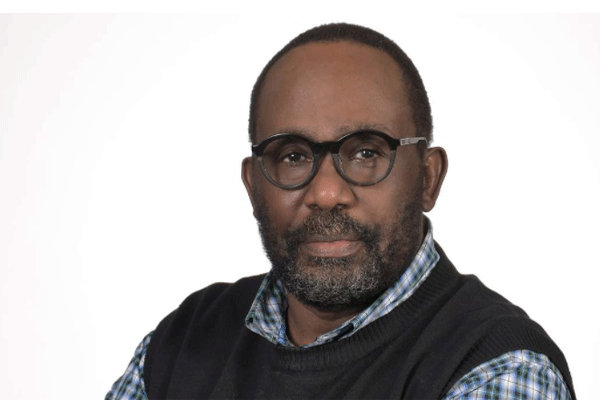Prime
35 years later, we revisit the gifts Luweero gave us

Author, Charles Onyango Obbo. PHOTO/FILE
What you need to know:
- We have had even less about the footprint that Luweero as the site of the Museveni rebellion, as opposed to the NRM, have left on Uganda.
Last week in “Ogwang the covidex man. Could he be Ugandan of 2021?”, we argued that the innovative tinkering of Covid-19 herbal relief covidex creator Prof. Patrick Engeu Ogwang, and the less remarked Covylice-1 of Dr Alice Lamwaka and her team at Gulu University’s Faculty of Biotechnology and Pharmaceutical Studies, are due in part to war.
The two come came of age during the wars in the Teso and Gulu regions. We learnt that during the war in northern Uganda and northeast Uganda, when people were cut off from “civilisation” and were hiding in the bushes and valleys, they deepened their already existing knowledge of herbal medicine because it was all they had. It is common in most of Africa, and sometimes that innovation comes in developing new foods from available plants.
Both directly and indirectly Ogwang and Lamwaka are products of that knowledge ecosystem. It left us with the question of what is the legacy of the Luweero war, fought by President Yoweri Museveni’s then-National Resistance Army/Movement and the Kampala government of Milton Obote – and briefly at the end against the Okello junta – between February 1981 and January 1986.
The war in Luweero lasted just under five years, about half the period that in the Teso region. At nearly 20 years, the war in northern Uganda lasted four times longer.
The Luweero war was at least 25 per cent an urban war, the Triangle being strewn with many small trading centres and open agricultural land in addition to patches of forest. The result is that in Luweero very many people, fearing slaughter, escaped to peri-urban centres in Buganda, or Kampala.
There is a lot that has been written about the NRA bush war, and quite some about how the NRM and Museveni’s ascendance to power changed Ugandan politics. But there is hardly anything about how it changed the country as a social and cultural entity. We have glimpses about how the Luweero war kicked off things like Uganda’s equivalent of a sex revolution, among other things, but episodically.
Virtually the only person who has written on this with any seriousness is the social critic and activist Kalundi Serumaga. I am aware, however, of some good research that has been done, but not yet published. A lot of it, with the very complicated insights they offer, will likely be surfaced in the post-Museveni era.
We have had even less about the footprint that Luweero as the site of the Museveni rebellion, as opposed to the NRM, have left on Uganda.
For starters, since the 1966 crisis and the abolition of the kingdoms in 1967, Buganda had mostly been outside the mainstream of Ugandan politics. Luweero as the epicentre of the NRA/M war, perhaps not surprisingly, brought two seemingly contradictory ideas back into the Ugandan mainstream; one was “federo” a political-cultural autonomy demand that ended up with the re-establishment of kingdoms as “cultural entities”. The Basoga got back the Kyabazinga, the Banyankole are still denied the Omugabe, and even the Japadhola got the Tieng Adhola. Apart from Buganda, none of the others fought for it.
The other contradictory product was a return of Buganda republicanism to the centre, represented by people like the late Lt. Col. Serwanga Lwanga in uniform, and on the other folks like Bidandi Ssali in civilian clothes.
The collapse of agriculture in Luweero was felt very away in Ankole, especially Bushenyi. Already rising as the Ugandan food basket because of the late 1960s land reforms by Milton Obote II, Ankole rose to grow most of the matooke and raise most of the beef that was eaten in Kampala for nearly two decades.
But perhaps the most far-reaching outcome was economic, which happened organically outside deliberate NRM government policy. Many of the young people who fled Luweero and Wakiso during the war, became the first generation of hustlers in Kikuubo and Kiyembe business zones in downtown Kampala. They couldn’t get into Owino Market.
They brought a whole new cut-throat and big mindedness to Ugandan business. The first movers among got their money, and went off to Dubai and Japan first to buy spare parts, and later used vehicles.
They became what one marketing guru in Kampala called “Nile Beer Millionaires”, bringing fortune to a once undervalued beer brand out of Jinja.
They made more money, and became the first cohort of indigenous Ugandans with no attachment to the state and its contracts to build malls and shopping arcades in Kampala, and kicked off a wave that soon swept the whole country.
The NRM talked a lot of talk about creating a “national capitalist” class. An organic local capitalist class did emerge alright, but it wasn’t the NRM’s child. It was born out of wedlock by Luweero.
Mr Onyango-Obbo is a journalist,
writer and curator of the “Wall of Great Africans”. Twitter@cobbo3





